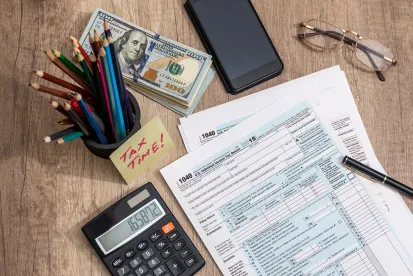On March 11, 2021, President Biden signed the American Rescue Plan Act of 2021 (the “Plan”). The Plan is the most recent stimulus bill enacted to address the COVID-19 pandemic and it comes almost one year to the date the first COVID relief bill containing the Families First Coronavirus Response Act (FFCRA) was passed.
The employer leave obligations contained in the FFCRA ended on December 31, 2020. The Consolidated Appropriations Act of 2021, which was passed on December 27, 2020, did not extend the FFCRA obligations; rather, it gave employers who were covered under the FFCRA the option to voluntarily decide to provide “qualified” paid sick leave or paid family leave wages to their employees and continue to receive a tax credit for such wages until March 31, 2021.
Although there was discussion about extending the FFCRA mandate and extending it to employers of all sizes, the Plan does not mandate employers provide COVID-19 related leave and continues to limit the tax credit to employers covered by the FFCRA (which for private employers, means employers with less than 500 employees).
For those covered employers that choose to voluntarily provide leave, the Plan extends the date employers can receive tax credits for qualified wages paid to employees from March 31, 2021 until September 30, 2021. Unlike the Consolidated Appropriations Act that did not expand the qualifying reasons for leave and limited qualifying wages to any unused entitlement under FFCRA, among other new provisions, the Plan expands the qualified leave reasons and provides new allotments of paid time that can qualify for tax credits.
Below are some FAQs on the changes made by the Plan:
Are Employers Required to Provide Emergency Paid Sick Leave or Emergency Family Medical Leave?
No. The mandate ended on December 31, 2020.
If Covered Employers Choose to Provide Emergency Paid Sick Leave or Emergency Family Medical Leave, Can They Still Receive the Tax Credit?
Yes. The Consolidated Appropriations Act of 2021 allowed covered employers who voluntarily provided paid sick leave or paid family leave under the same terms as provided under the FFCRA to continue to take a tax credit through March 31, 2021. The Plan provides the opportunity for tax credits to continue for qualifying wages paid from April 1, 2021 to September 30, 2021.
For What Purposes Can Paid Leave Be Provided in order for a Covered Employer to receive a Tax Credit?
In order to receive the tax credit, leave must be provided for a qualifying reason under the FFCRA for either the Emergency Paid Sick Leave or the Emergency Family and Medical Leave. The American Rescue Plan expanded the reasons for both the paid sick leave (“PSL”) and paid family leave (“PFL”) to include leave provided to an employee who is:
-
Obtaining a COVID-19 immunization,
-
Recovering from an injury, disability, illness or condition related to COVID-19 immunization, or
-
Seeking or awaiting the results of a COVID-19 test or diagnosis because either the employee has been exposed to COVID or the employer requested the test or diagnosis
In addition, the Plan expanded the reasons that leave can be provided as PFL (which is a longer period than the PSL) and still receive the credit, to include all of the reasons that PSL can be used, which includes instances where an employee is subject to a quarantine or isolation order, where an employee was told to self-quarantine by a healthcare provider due to COVID-19, where an employee is experiencing symptoms of COVID-19 and is seeking a medical diagnosis, where an employee is caring for an individual who is subject to a quarantine or isolation order or has been advised to self-quarantine, and where an employee’s son or daughter’s school or place of child care is closed due to COVID-19.
How Much Leave May a Covered Employer Provide and Still Receive the Tax Credit?
The Plan permits covered employers to receive a tax credit for up to ten days of PSL for employees starting April 1, 2021, even if an employer previously has taken a tax credit for PSL leave paid to those employees prior to April 1, 2021. The tax credit an employer can receive for PSL is based on an employee’s regular rate of pay if the leave is needed for one of the new reasons related to immunization or testing (described above) or because of the employee’s own symptoms, quarantine or isolation up to a cap at $511 a day. For any other PSL reason, the amount of tax credit an employer can receive is limited to 2/3 the employee’s regular rate of pay and capped at $200 a day.
Employers can also receive a tax credit for up to 12 weeks of PFL. The total cap for PFL has been increased from $10,000 to $12,000. An employer can now take a total tax credit of up to $12,000 per employee. The available credit per employee is still limited to 2/3 the employee’s regular rate of pay up to a maximum of $200 per day for all PFL reasons for leave, including the new leave reasons related to immunization or testing (described above) and reasons that qualify for a $511 per day cap when the wages are paid under the PSL provisions. The first two weeks of PFL no longer need to be unpaid.
Is a Covered Employer Eligible For the Tax Credits if it Provides PSL and/or PFL Only to Certain Employees?
The Plan includes a non-discrimination requirement. Employers may not claim a tax credit on any PSL or PFL wages paid in any calendar quarter if the employer discriminates in favor of highly compensated employees (within the meaning of Section 414(q) of the Internal Revenue Code), full-time employees or employees on the basis of employment tenure in providing the PSL or PFL, as applicable. However, this non-discrimination provision applies separately to PSL wages and PFL wages and so employers should be able to choose only PSL or PFL and still receive the tax credit for its payment of the PSL or PFL wages, as applicable.
Applicability of tax credits under the Plan are subject to IRS guidance. As it did in response to the Consolidated Appropriations Act of 2021, we expect the IRS will issue additional FAQs in the near future.





 />i
/>i
